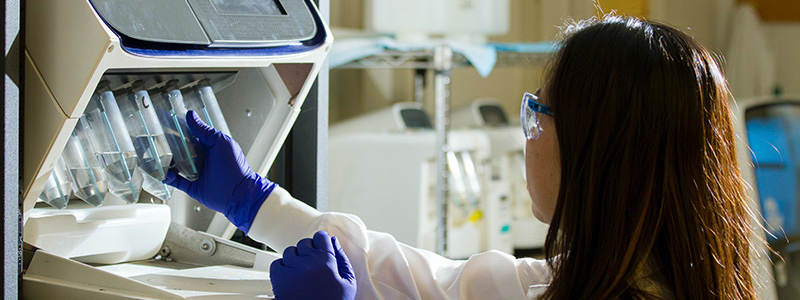The challenges to safely shipping Durable Medical Equipment are real. This equipment contains delicate instrumentation, protruding knobs and controls, pristine plastics and metals with highly polished surfaces and is often odd-shaped. Effective packaging for medical equipment is akin to putting a round peg in a square hole. Also, since it is often delivered into a clinical setting, recipients struggle with handling and disposal of the packaging materials.
In this blog, we address these challenges and show why Ecorrcrate shipping solutions are better for transport of sensitive medical equipment.
Your Time is Money
Medical equipment is most often shipped in robust containers. This will often be a combination of a wood crate for structure and foam for cushioning. Let’s spotlight the TIME challenge of packing and unpacking:
- Packing in a wood container is time consuming. Either the wood container has a preset form or it can be built around the product requiring power tools and nails or screws. In either case, it is difficult to avoid damage to surfaces as well as protruding knobs and controls in the packing process. This takes TIME.
- Unpacking your equipment in an efficient and careful way, protecting your investment is key. Removing tightly packed, delicate equipment from foam inserts inside of wood packaging without surface scuffing or damaging the delicate instrumentation takes TIME.
So what makes Ecorrcrate better? Ecorrcrates are modular, typically made in 6 separate pieces. The top, bottom, two sides and two ends. They are easy and safe to set up ahead of time. Or, easily and quickly built up around your product without tools and the associated risk of using power tools. When unpacking from an Ecorrcrate, the modular pieces can be quickly and easily removed one-at-a-time.
Also speeding up the process, Ecorrcrates are made from a non-abrasive and more forgiving corrugate material that will not cause incidental damage to your product in the packing and unpacking process. In either case, your equipment will be well protected and packing and unpacking will be much faster and safer.
Delivery and Handling – Up and Down the Elevator!
Let’s evaluate what happens when your new equipment arrives. If you are fortunate, you’ll be located in a single-story building with a deep-set receiving dock. However, it’s more common to be in a multi-level building with restricted access and difficulty receiving and handling heavy freight.
Once you get through the receiving process, you have to carefully move the crate made from wood and nails through your doors, down the hallways and up and down elevators. Obviously this is precarious in an office or clinical setting. Unforgiving wood crates can easily cause incidental damage to doors, walls and people.
Ecorrcrates are made from light-weight, yet highly durable corrugate materials commonly weighing one-half (1/2) the weight of wood. This eases the receiving process and simplifies handling and maneuvering through your office or clinical setting. As mentioned above, these materials are non-abrasive and forgiving, unlikely to cause incidental damage to doors, elevators, office walls as well as reducing pinch and cut injury risk to your people.
Can I really get the protection I need in an Ecorrcrate cardboard crate?
Cardboard is a very general term. Cardboard is used in many things from cereal boxes to heavy-duty shipping boxes. It all depends on the construction.
The basic building block of the patented Ecorrcrate is the same corrugated cardboard used by shipping box makers. The core is a fluted paper that is sandwiched between two flat layers of liner paper. These corrugated sheets are then made into a thick and resilient building material, Ecorrboard, through a proprietary laminating process. The end result is a lightweight material that most often exceeds the strength of wood.
Ecorrboard is also the base material for dunnage and cushioning inside of the Ecorrcrate. Ecorrboard is an earth-friendly, recyclable and renewable paper-based alternative to plastic-based, hard to recycle and non-renewable cushioning foam. Even if specifications require foam, packing in Ecorrcrate will reduce the need for foam as, unlike wood, the Ecorrboard structure doubles as a cushioning product.
Ecorrcrate Disposal
Paper products are, by far, the easiest products to recycle and the most common renewable resource available worldwide. All Ecorrcrates are ISPM15 compliant and therefore, the most readily accepted product in international shipping.
Ecorrcrate disposal is as easy as it gets. Often, after numerous uses, at the end of the usable life cycle of the shipper, simply place the Ecorrcrate with Ecorrboard in your paper recycling stream for a future repurpose. Then enjoy the feeling that it won’t add to landfill overuse.
In Summary
Wrapping up, patented Ecorrcrate shipping solutions are a better option for safely shipping durable medical equipment because:
- It is Easier and Faster to pack and unpack lowering process costs.
- You are using a sustainable and effective cushioning and dunnage solution for easier use and disposal.
- You are reducing the amount of overall packaging needed, especially non-renewable products.
- It is Lighter weight, easier to handle in an office and clinical setting lowering risk in use.
- You are providing an overall better customer experience.
Click on the Contact button now to get started on your custom Ecorrcrate solution.

